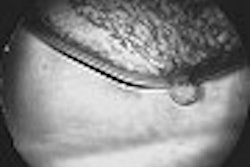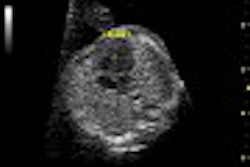Dear Ultrasound Insider,
The shape of a child's bladder can significantly affect the accuracy of ultrasound estimates of bladder volume. As a result, specific correction coefficients should be applied accordingly, say Croatian researchers.
In a presentation at the 2003 Leading Edge in Diagnostic Ultrasound meeting in Philadelphia, Dr. Boris Brkljacic found significant reduction in bladder-volume measurement errors by employing sonographic classification of bladder shape into one of five categories, with subsequent application of specific correction coefficients for bladder shape.
Applying a general correction coefficient of 0.56 for all patients would have led to underestimation of bladder volume in as many as 77% of the patients studied, said Brkljacic of the department of diagnostic and interventional radiology at the University Hospital Dubrava in Zagreb. As an Ultrasound Radiology Insider subscriber, you have access to this story before it is published for the rest of our AuntMinnie.com members.
Breast ultrasound is the subject of another article we’re featuring this month. In a presentation at the Current Trends in Breast Ultrasound meeting in San Francisco, Cindy Rapp shared tips on how to enhance these studies, including indications for use, how to make the most of equipment, patient positioning, and system optimization.
While mammography images are relatively easy to obtain and tricky to interpret, breast ultrasound studies are the opposite, said Rapp, a breast sonographer at Radiology Associates, Sally Jobe Breast Center, in Greenwood Village, CO. Proper scanning techniques and algorithms are crucial, and depend heavily on the skill of the operator. To hear more about Rapp’s experience with breast ultrasound, click here.
Do you have an idea for a topic you'd like to see covered in our Ultrasound Digital Community, or an article you'd like to submit? Please feel free to drop me a line.




















